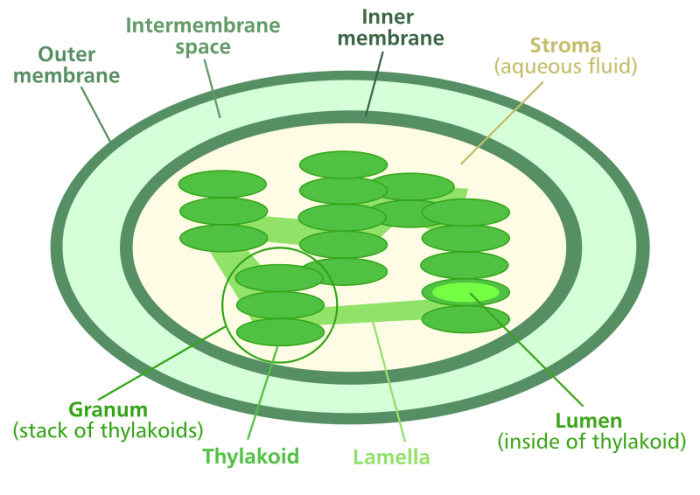How do chloroplasts capture energy from the sun worksheet – Embarking on a journey to unravel the intricacies of how chloroplasts capture energy from the sun, this comprehensive guide unveils the remarkable processes that underpin photosynthesis. Delving into the depths of chloroplast function, we will explore the mechanisms by which these cellular powerhouses harness light energy to fuel plant growth and sustain life on Earth.
Through an engaging narrative that seamlessly blends scientific rigor with clarity, this guide illuminates the intricate workings of chloroplasts, from their role in capturing sunlight to their involvement in the production of glucose. Prepare to be captivated as we delve into the fascinating world of photosynthesis and unravel the secrets of how chloroplasts transform sunlight into the energy that sustains our planet.
Photosynthesis and Chloroplasts

Photosynthesis is a vital process that converts light energy from the sun into chemical energy stored in glucose molecules. This process is carried out by specialized organelles within plant cells called chloroplasts.
Chloroplasts are responsible for capturing light energy and using it to convert carbon dioxide and water into glucose and oxygen. The overall equation for photosynthesis is:
6CO 2+ 6H 2O + light energy → C 6H 12O 6+ 6O 2
Chloroplast Structure
Chloroplasts are enclosed by a double membrane and contain an internal structure called the thylakoid system. The thylakoid system consists of flattened sacs called thylakoids, which contain chlorophyll and other pigments responsible for light absorption.
Light Absorption and Energy Capture
Chloroplasts capture light energy through chlorophyll, a green pigment that absorbs specific wavelengths of light, primarily blue and red. When light strikes a chlorophyll molecule, an electron is excited to a higher energy level.
The excited electron is then transferred through a series of electron carriers, releasing energy that is used to pump protons across the thylakoid membrane. This creates a proton gradient, which drives the synthesis of ATP.
Photosystems
The thylakoid membrane contains two types of photosystems, photosystem II (PSII) and photosystem I (PSI). PSII absorbs light energy and uses it to split water molecules, releasing protons, electrons, and oxygen.
PSI absorbs light energy and uses it to reduce NADP+ to NADPH. The electrons from PSII and PSI are then used to generate ATP and NADPH, which are essential for the light-independent reactions of photosynthesis.
Electron Transport Chain and ATP Synthesis, How do chloroplasts capture energy from the sun worksheet
The electron transport chain in chloroplasts is similar to that in mitochondria. It consists of a series of electron carriers that pass electrons from PSII to PSI, releasing energy that is used to pump protons across the thylakoid membrane.
The proton gradient created by the electron transport chain drives the synthesis of ATP by ATP synthase, an enzyme embedded in the thylakoid membrane.
| Step | Process |
|---|---|
| 1 | PSII absorbs light energy and splits water molecules, releasing protons, electrons, and oxygen. |
| 2 | Electrons from PSII are passed through the electron transport chain, releasing energy. |
| 3 | Energy from the electron transport chain is used to pump protons across the thylakoid membrane. |
| 4 | The proton gradient drives the synthesis of ATP by ATP synthase. |
| 5 | PSI absorbs light energy and reduces NADP+ to NADPH. |
Carbon Fixation and Glucose Production
The light-independent reactions of photosynthesis, also known as the Calvin cycle, occur in the stroma of chloroplasts. The Calvin cycle uses the ATP and NADPH generated by the light-dependent reactions to convert carbon dioxide into glucose.
The first step in the Calvin cycle is the fixation of carbon dioxide by the enzyme ribulose 1,5-bisphosphate carboxylase/oxygenase (Rubisco). This reaction combines carbon dioxide with a five-carbon sugar molecule to form two three-carbon molecules.
The three-carbon molecules are then reduced and rearranged to form glucose, a six-carbon sugar molecule.
The Calvin cycle is a cyclic process, meaning that it regenerates the starting molecule, ribulose 1,5-bisphosphate, at the end of each cycle.
Environmental Factors Affecting Chloroplast Function
The function of chloroplasts is affected by several environmental factors, including:
- Light intensity:Chloroplasts require sufficient light intensity to carry out photosynthesis. Low light intensity can limit the rate of photosynthesis.
- Temperature:Chloroplasts function optimally at a specific temperature range. Extreme temperatures can damage chloroplasts and inhibit photosynthesis.
- Water availability:Water is essential for photosynthesis. Water stress can lead to reduced photosynthesis and plant growth.
Plants have adapted to different environmental conditions by developing mechanisms to regulate chloroplast function and maintain photosynthesis.
FAQ: How Do Chloroplasts Capture Energy From The Sun Worksheet
What is the primary function of chloroplasts?
Chloroplasts are the organelles responsible for photosynthesis, the process by which plants convert light energy into chemical energy stored in glucose.
How do chloroplasts capture light energy?
Chloroplasts contain chlorophyll, a green pigment that absorbs light energy from the sun. This energy is then used to power the electron transport chain and ATP synthesis.
What is the role of ATP in photosynthesis?
ATP is the energy currency of cells. It is produced during photosynthesis and used to power various cellular processes, including the Calvin cycle, which converts carbon dioxide into glucose.

